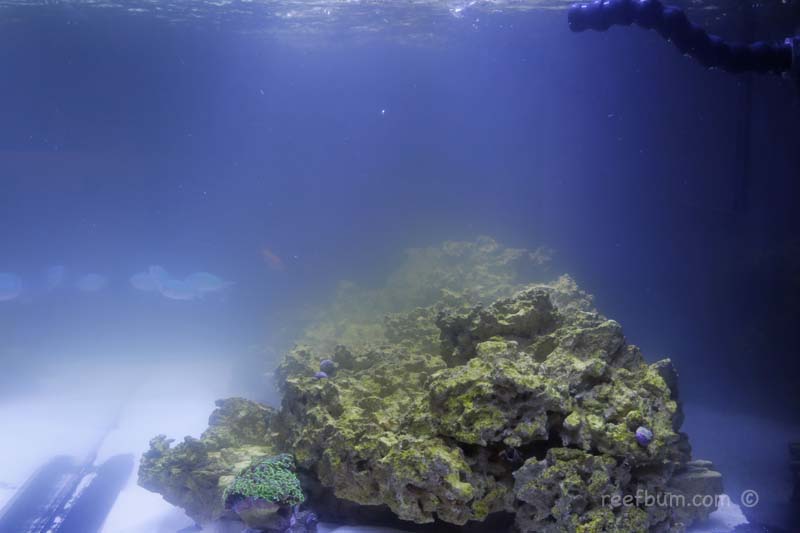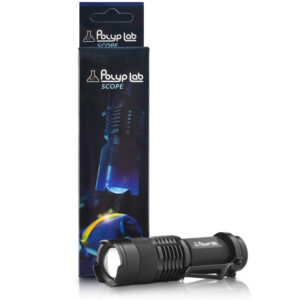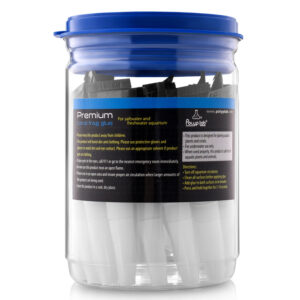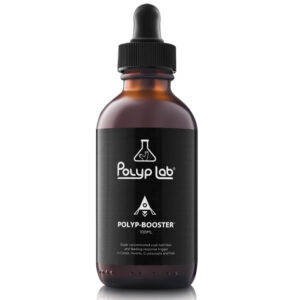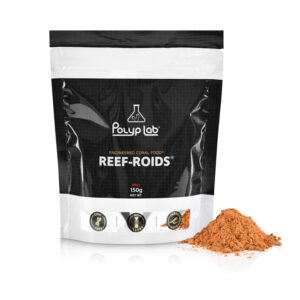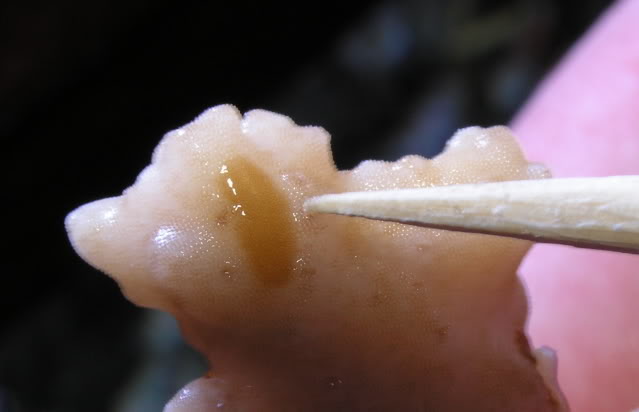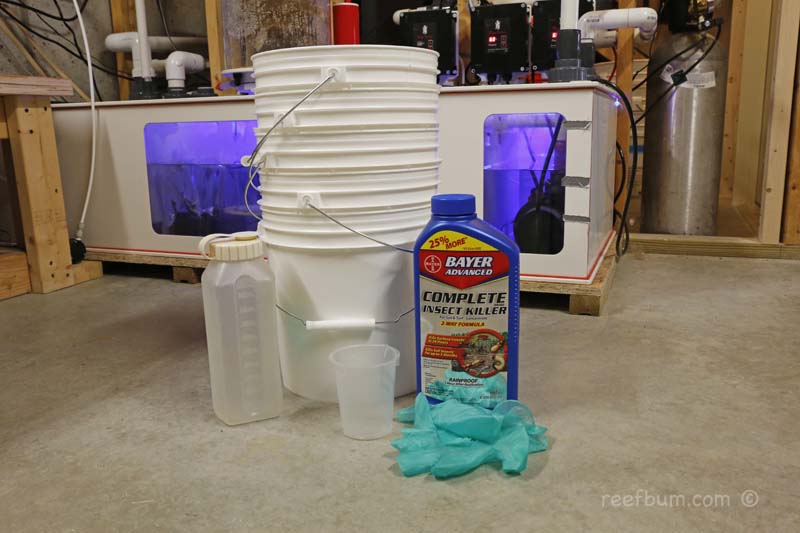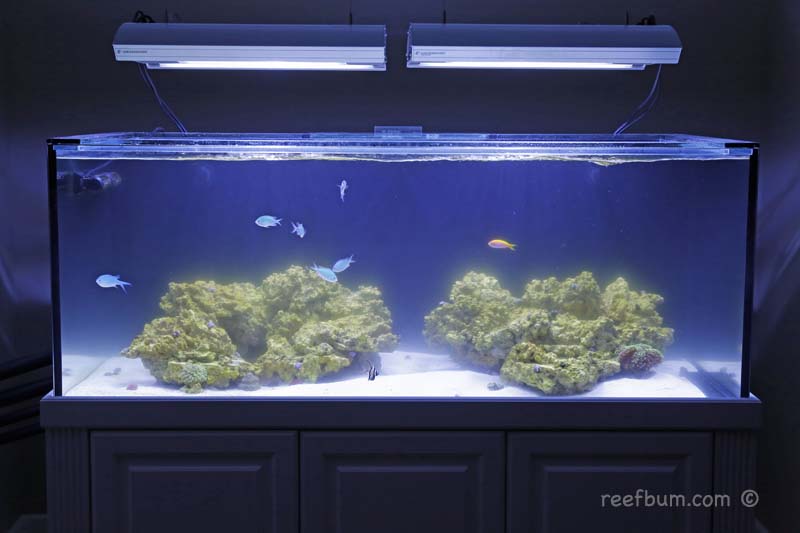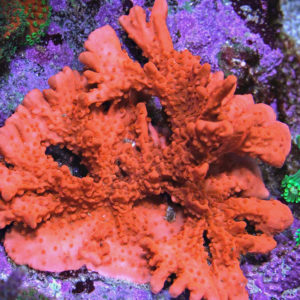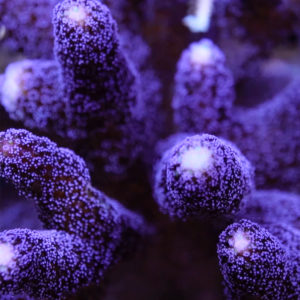Crystal clear water is vital for a thriving, healthy reef tank so when a tank suddenly turns cloudy it is time to put that detective hat, study the evidence and come up with a plan of attack to put some handcuffs on the problem. Cloudy aquarium water can be caused by a number of things, including micro bubbles, an algae bloom, a sand storm due to high flow in the display, calcium precipitation, coral spawning or a bacterial bloom. I recently had to tackle this issue with my new 187 gallon reef tank so I went through this list systematically to diagnose the problem.
Troubleshooting The Problem
It wasn’t micro bubbles from the skimmer, pump or something else since I would have noticed that problem right after the tank came online (the cloudiness suddenly appeared during month three). And it wasn’t a coral spawning event since I just had a few LPS corals in the tank at the time.
One of the first things I suspected was a sand storm from a re-circulating pump since they do push a lot of water. In fact, certain parts of my sand bed have moved due to the high flow. I tested this theory by filling a glass with some tank water and letting it sit for a while to see if any sand particles settled out. This method is also a good way to see if calcium precipitation is the culprit, which can occur when over dosing kalkwasser. Ultimately, I did not see any sand or calcium settle in the bottom of the glass so I suspected a bloom from either algae or bacteria since both will stay in suspension.
The cloudy water was a milky white color so I quickly deduced it was a bacterial bloom since an algae bloom usually turns the water green. Bacterial blooms are one of the more common reasons for cloudy water, especially for a new tank such as mine. It occurs when heterotrophic bacteria are blooming rapidly, causing the water to turn white. These bacteria are considered scavengers since they feed off of organic waste in the tank such as fish poop, dead fish, uneaten food and detritus.
Cloudy Aquarium Water – What About a UV Sterilizer?
I did have several fish deaths recently so that became my prime suspect. Ok, so how to remedy the situation? A UV sterilizer is certainly one solution since UV light will kill microorganisms in the water such as bacteria, algae and viruses. In theory, good guy microorganisms in the rock and sand are not killed since they must be free-floating and pass through the UV sterilizer.
My recent fish deaths had perplexed me since I did not notice any ich. They seemed to be stressed, with a loss of appetite, heavy breathing and abrasions on their bodies as the main symptoms. One even hung out near the top of the tank. I suspected low oxygen levels in the water was a possible factor. To remedy this, I increased flow in the tank, which increased surface agitation and led to more oxygenation of the water. The higher flow also helped to suspend detritus, improving exportation of organic matter.
Check The Protein Skimmer
I believe my protein skimmer was also a potential issue. On top of removing organic matter, protein skimmers do a great job aerating the water. I had been struggling to get mine dialed in so the skimmer was not performing at an optimal level. Solving that problem certainly helped. My new tank was also a likely contributor to the problem since it does take time to establish the proper balance of bacteria in a tank. Adding too many fish too soon can jump start a bacterial bloom.
What about water changes? They are probably not going to help a lot since the bacteria can reproduce very quickly. I didn’t see any improvement after I did a large one. However, cleaning the filter socks more frequently, vacuuming the gravel to remove detritus and not overfeeding the fish should help.
Patience is a Virtue
Patience is key in this whole process so give the bloom a chance to cycle through. My tank started to clear up a couple of weeks after I increased flow and adjusted my protein skimmer. Ultimately, I did end up using a UV sterilizer to totally knock out the bloom. I used two 24W UVs. They were relatively inexpensive and very easy to install and then remove when I was finished using them. The difference over a couple of days was amazing.
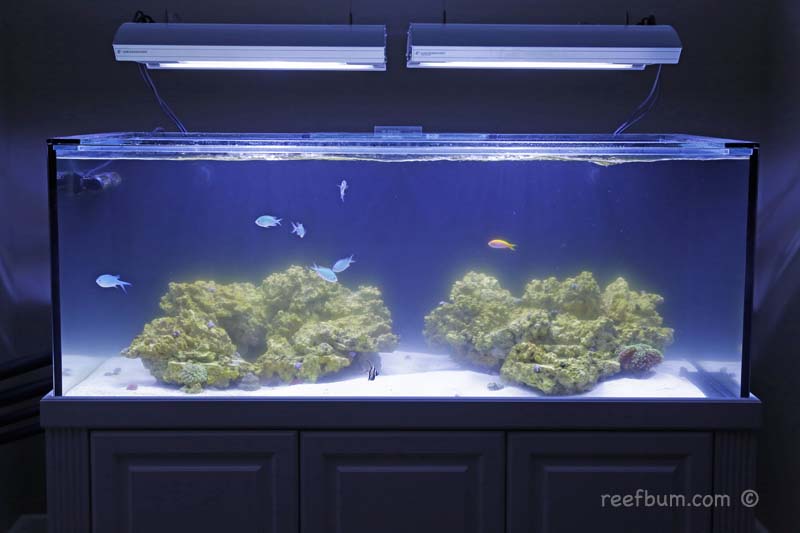
Before use of UV Sterilizer
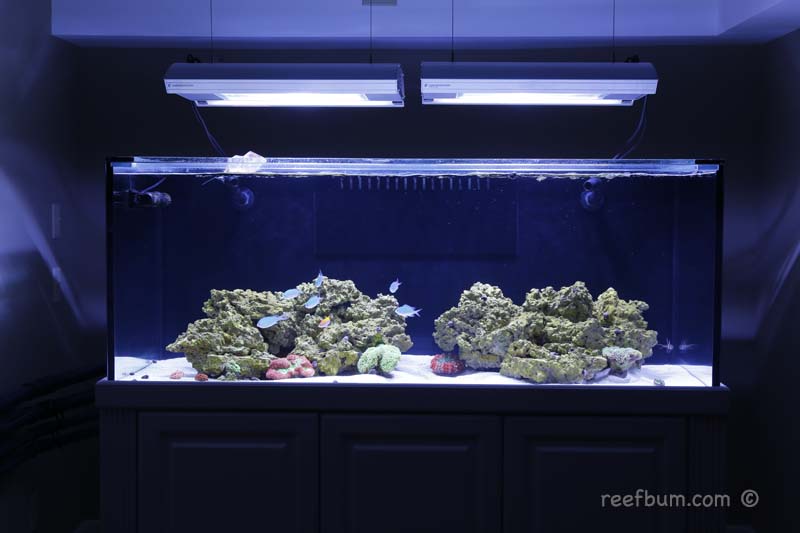
2 Days After Use of UV Sterilizer
A UV is a nice tool to have in the quiver for this sort of battle but it is very important to figure out the source of the problem so it can be avoided in the future. Without this knowledge you are only putting a band aid on the problem by using UV.
Additional Resources
If you would like some help with a new tank build, including help designing a custom aquarium, or help re-configuring your current setup then you can visit this page for more information. And if you are looking to add some equipment, I do sell GHL, Pax Bellum, Reef Octopus Calcium and Kalk Reactors and Royal Exclusiv products, including Dreamboxes, which is the equipment I use and recommend. I also sell Reef Brite metal halide and LED fixtures as well as Maxspect & IceCap Gyres.
As for additional insights and information, please explore my many other reef tank and SPS related articles as well as my YouTube channel. For an even deeper dive into reef tank care you can check out my Reef Keeping Master Class. This online course is an immersive and one of a kind educational tool designed to help reef aquarium hobbyists build and maintain a beautiful SPS reef tank. The course is a series of video presentations with some supplemental video from my YouTube channel. There are also quizzes to help students retain and understand the information presented in the course.
Need some frags…..I can help with that as well 

